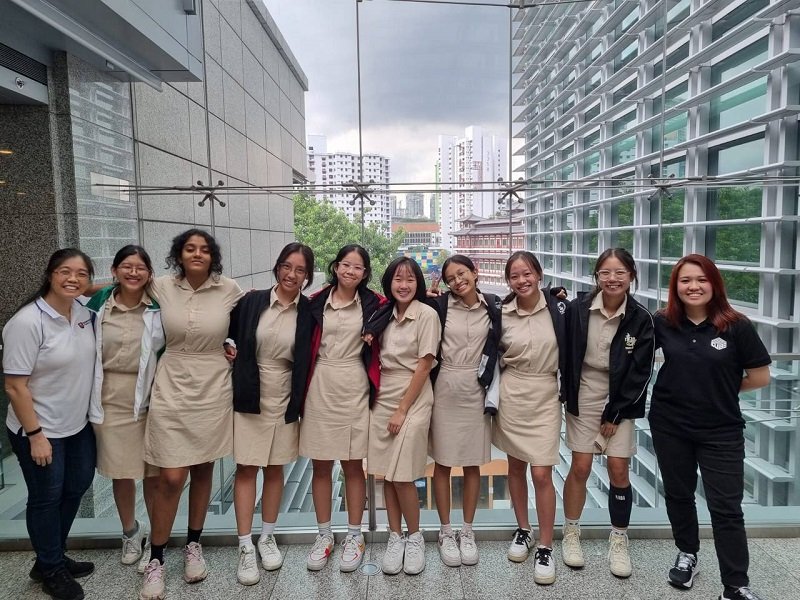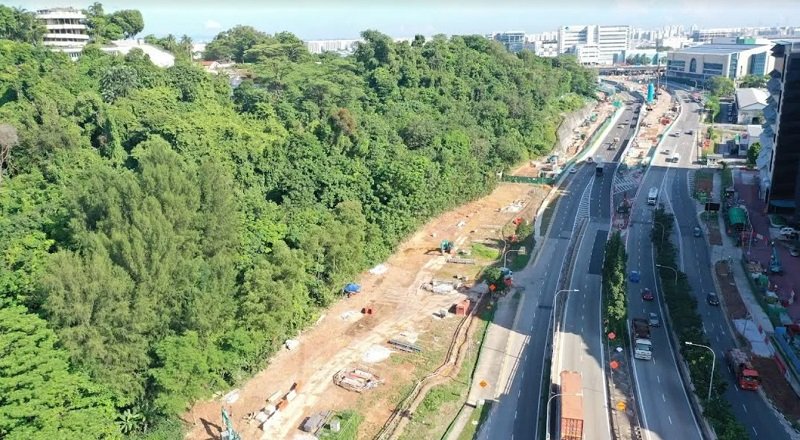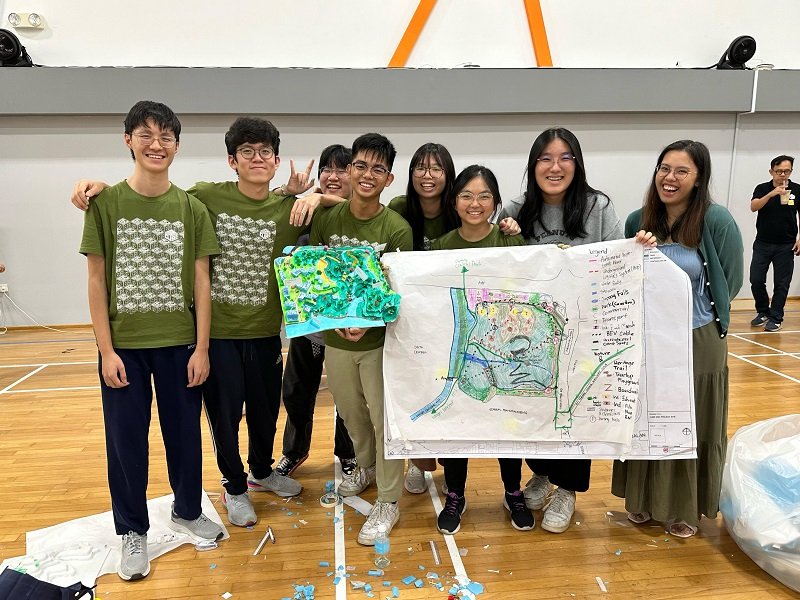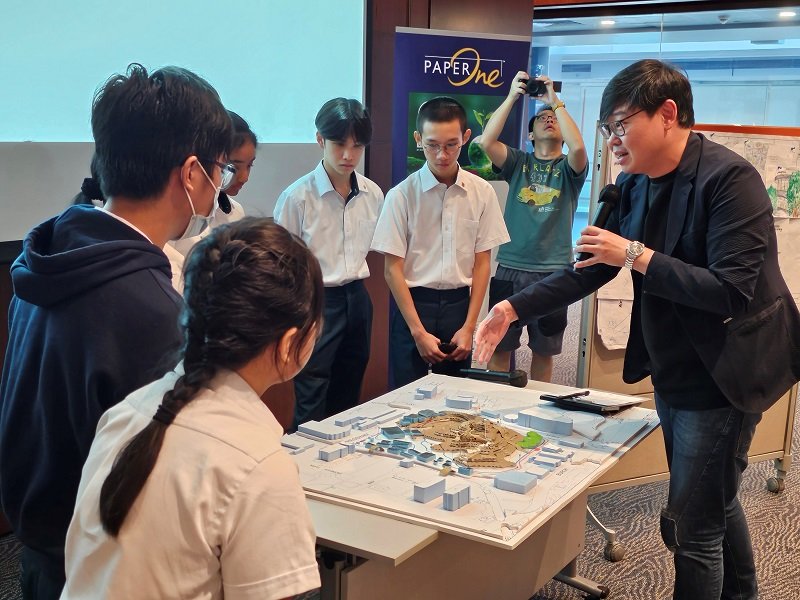The Challenge for the Built Environment (CUBE) workshop cum competition has been nurturing youths in urban planning and design for the past decade, inspiring them to join our built industry as future architects and planners. Four student facilitators from the 2023 edition reflect on why such learning experiences are important and how they are giving back.
CUBE is a five-day workshop cum competition held annually for tertiary students. By developing proposals for an actual site in Singapore, participants dive into the intricacies of planning and urban design and gain first-hand experience as urban planners.
For each edition of CUBE, mentorship is provided by a dedicated group of architects, experts from the industry and student facilitators from the National University of Singapore (NUS)’s Department of Architecture. We speak to four NUS student facilitators from the previous edition of CUBE in 2023, Dexter Lim, Alison Liew, Jence Cabella and Cleon Lai, to find out about their mentorship experience and why it is important to keep engaging our youths.

The CUBE 2023 NUS student facilitators with the judges from URA, JTC and the architectural industry.
You had previously joined CUBE as a participant. Why did you decide to become facilitators at CUBE in 2023 and what is its value?
Alison: I had such a great time as a participant of CUBE that I came back as a facilitator to help others gain this valuable learning experience as well. I hope this sparks their interest to join architecture or related fields in future. For the 2023 edition, I was surprised to see how much heart and soul the students put into developing their proposals. They had so much enthusiasm for wanting to make our city better.

NUS student facilitator, Alison Liew (far right in black), with the student team she was mentoring.
Cleon: My prior experience with CUBE really opened my mind to how the interactions and interplay between people, natural and built environment can shape the way we experience our city. As a facilitator, I wanted to contribute to this unique learning experience for more students and help support my school to win the competition.
The rigour of the workshop and it being a competition also drives the students to develop the best ideas and offers a glimpse of what it may be like as an architecture student for those interested to pursue this field later.
How can we get our youths to do more in helping to shape our city?
Alison: We need to give them a greater stake in shaping the spaces around them – by creating more opportunities for them to get involved in tackling urban challenges and problems with other stakeholders. It is also about empowering our youths to think big and go wild with their ideas. There can be more platforms for youths with diverse backgrounds and talents to come together and think of solutions, as this can generate very interesting proposals.
Dexter: It is crucial that we remain open to ideas from our youths who can come up with new possibilities in envisioning the future of our city.

NUS student facilitator, Dexter Lim (on the left), at the last day of CUBE 2023.
The CUBE 2023 edition focused on developing future proposals for the former Bird Park site within an industrial area. What are you looking forward to see in this area?
Dexter: The site is interesting because it’s where you have the former Bird Park area as the key green space within an industrial estate. This “green lung” makes this place stand out and the area also has significant heritage. I hope that the natural and historic elements can be retained even while new developments are added.

Jurong Hill has been a key landmark in the area, with the unique Jurong Hill Tower at the top. Image: JTC.
I would like to also see how cycling paths in this area can connect to other park connectors and cycling networks. It would be cool to see this place become a popular cycling destination in future!
Jence: I am looking forward to witnessing the area’s transformation into a highly dynamic development for work and play, where industrial uses are integrated with amenities, recreational and public spaces, and other creative new uses. I also hope that the space will be filled with even more greenery to enhance the existing natural terrain in the area.
Why did you decide to study architecture?
Jence: I’ve always been curious about the dynamics of human interaction with spaces and spatial objects. From studying interior architecture and foundational psychology, my passion deepened, motivating me to pursue further studies in architecture and urban planning.

Jence Cabella (far right in green), with the student team she was mentoring.
Cleon: I had initially wanted to become a researcher in biology and life sciences. But it was partly due to my experience at CUBE that influenced me to pursue landscape architecture instead.
Dexter: I chose to study landscape architecture as I enjoy being able to shape the way people experience spaces. Having lived near to the Rail Corridor while growing up, I have seen how it has come alive in the recent years as a meaningful community space. This inspires me in wanting to do the same for other areas around Singapore.
Why are some of your favourite places in Singapore?
Alison: Telok Blangah is one of my favourite neighbourhoods as I used to live there. I enjoyed being able to go hiking at any time as Mount Faber Park is located right in front of my block. The Henderson Waves is one of my favourite architectural structures in the area, offering great views of the landscapes around.
Dexter: Aside from the Rail Corridor, I’ve recently found a love for Peace Centre! I like how this old building was repurposed to offer spaces for the community to come together, especially in its final months where young artists were given a blank canvas to share their personal expressions within the building. There had also been various interesting exhibitions and pop-up stores.
How do you hope to contribute to Singapore’s built environment when you graduate?
Alison: I’d like to see more eco-friendly and people-friendly designs in Singapore’s architecture. This means using sustainable materials and energy-efficient technologies to lessen our environmental impact. I also hope to see more interesting public spaces that everyone can access and use comfortably, regardless of age or ability for a more inclusive and connected community. After graduating, my goal is to bring these ideas into practice.
Dexter: My dream is to be part of Singapore’s planning scene! As a landscape architect, we are trained to work across different scales, and I firmly believe that landscape architecture has social and economic impacts beyond the ecological benefits.

Singapore Institute of Architects President Melvin Tan sharing his feedback with Anderson Serangoon Junior College students on their master plan for the site.
Cleon: I hope to see more mixed-use developments, such as Kampong Admiralty that cater to different uses and multigenerational experiences, as well as public spaces that can be easily activated to host activities like night markets and festivals that could bring more life into the city. When I graduate, I foresee myself working in the urban planning and design field, with a particular focus on rewilding and farming.
Learn more about the 2023 CUBE edition and the winning ideas here: https://www.go.gov.sg/cube2023-formerbirdpark
The 2023 CUBE student proposals are also on display at The URA Centre ground floor from 18 October to 28 November 2024.
Source: https://www.ura.gov.sg/Corporate/Resources/Ideas-and-Trends/Nurturing-the-next-generation-of-architects-and-planners



